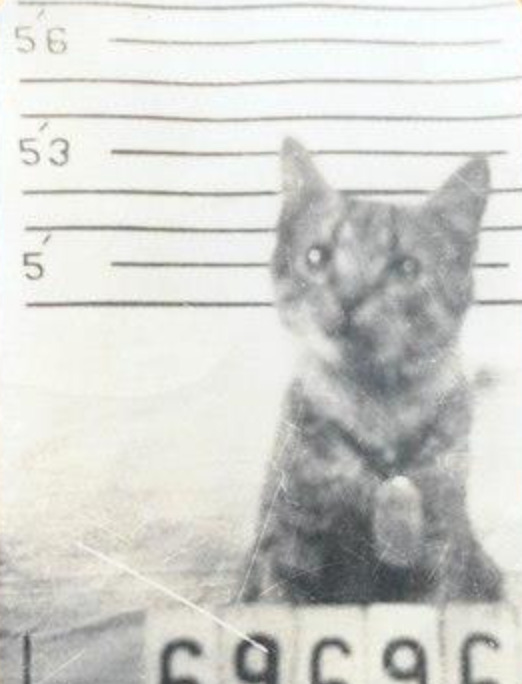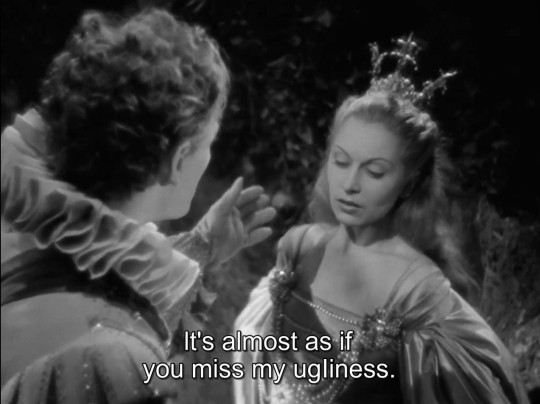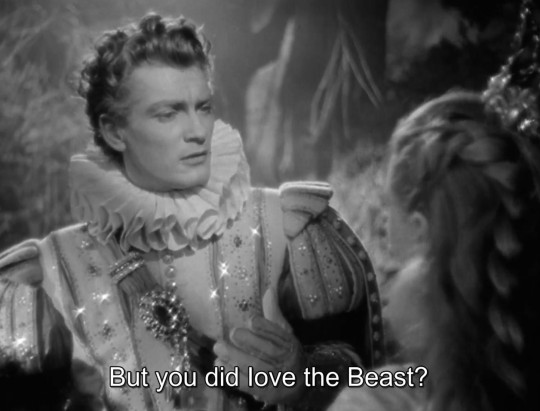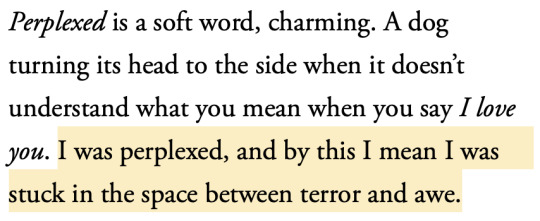Text
In 1944 a kitten named George (short for General Electric) was saved from drowning by a U.S. Navy crew member. George was then photographed and given a liberty card and detailed health record. Source.


239K notes
·
View notes
Text
Me wondering why i feel ill today as if I didn't consume an ungodly amount of sickly sweet bubbly malibu and coke last night
4 notes
·
View notes
Photo






La Belle et La Bête (1946, Jean Cocteau) | Beauty (Or the Taste for the Beast), Heroines, Claude Cahun | Beauty and the Beast: Fantasy in Two Acts, Fernand Noziere
30K notes
·
View notes
Text

Selective Mutism (SM) is a situational anxiety disorder. Those with SM speak fluently in some situations but remain consistently unable to speak in others. Outside of speech, all forms of communication may be inhibited, such as writing, body language, gestures, and facial expressions in some people.
Good Links: DSM, NHS, iSpeak, SMIRA
SM is not very well known, therefore there are many misconceptions about it.
1 - Selective Mutism is NOT a choice.
People with SM are unable to speak in certain situations, or with certain people. They do not refuse to speak.
2 - People of ANY AGE can have selective mutism.
SM usually begins during early childhood, most commonly before the age of 5. Many people believe that it only affects children and that they will ‘grow out’ of it. This is not always true. It can still persist into adulthood, especially without treatment.
3 - Selective Mutism is NOT always due to trauma.
There is no evidence that people with SM are more or less likely to have experienced trauma or mistreatment than people without SM. As stated, SM is an anxiety disorder, not a trauma disorder. Although some people with SM may attribute it to trauma, this is not the case for the vast majority of people with SM.
4 - Selective Mutism is NOT a symptom of, or the same as, autism.
Selective Mutism is classed as an anxiety disorder and can be ‘recovered from’. Whilst autism is classed as a neurodevelopmental disorder, or neurodivergence, which someone will always have.
The two conditions are commonly comorbid. However an important distinction is that SM is mutism that is specifically caused by anxiety, not by autism (or by delayed speech or language impairment). In each case the mutism will have fundamentally different causes, and require different ways to treat and respond to each person. This is an important distinction, as misdiagnosing one as the other can be potentially harmful.
5 - People with Selective Mutism always have ‘lesser’ language abilities.
There is no correlation between SM and an individuals language development.
655 notes
·
View notes
Text
Feel free to specify which model of car it is! For example, Honda CRVs: none of them know how to fucking drive >:( Meanwhile, all Nissans are my enemies by principle
#Tesla bc they either drive just under the speed limit or WAY over#and have lights too bright and with bad oncoming traffic detection#the amount of times i have been blinded and dazzled by a tesla in the dark
18K notes
·
View notes
Text
Mp: I don't think the bankers bonuses should have ever been cut. 😝
Them: 😐😐😐
Watching a panel show featuring 3 left wing/centrist comedians and a tory mp. Not sure who greenlit that idea but it's a mix of cringe and joy.
5 notes
·
View notes
Text
Watching a panel show featuring 3 left wing/centrist comedians and a tory mp. Not sure who greenlit that idea but it's a mix of cringe and joy.
5 notes
·
View notes
Text
I want someone to look at me the way Ashe looks at Hillinghead in Bodies
#netflix bodies#1 in the uk but no ones talking about it#me after arresting some1 for suspected murder and being gay then letting them tie my tie as they stare directly at my lips 1 episode later
32 notes
·
View notes
Text

Selective Mutism (SM) is a situational anxiety disorder. Those with SM speak fluently in some situations but remain consistently unable to speak in others. Outside of speech, all forms of communication may be inhibited, such as writing, body language, gestures, and facial expressions in some people.
Good Links: DSM, NHS, iSpeak, SMIRA
SM is not very well known, therefore there are many misconceptions about it.
1 - Selective Mutism is NOT a choice.
People with SM are unable to speak in certain situations, or with certain people. They do not refuse to speak.
2 - People of ANY AGE can have selective mutism.
SM usually begins during early childhood, most commonly before the age of 5. Many people believe that it only affects children and that they will ‘grow out’ of it. This is not always true. It can still persist into adulthood, especially without treatment.
3 - Selective Mutism is NOT always due to trauma.
There is no evidence that people with SM are more or less likely to have experienced trauma or mistreatment than people without SM. As stated, SM is an anxiety disorder, not a trauma disorder. Although some people with SM may attribute it to trauma, this is not the case for the vast majority of people with SM.
4 - Selective Mutism is NOT a symptom of, or the same as, autism.
Selective Mutism is classed as an anxiety disorder and can be ‘recovered from’. Whilst autism is classed as a neurodevelopmental disorder, or neurodivergence, which someone will always have.
The two conditions are commonly comorbid. However an important distinction is that SM is mutism that is specifically caused by anxiety, not by autism (or by delayed speech or language impairment). In each case the mutism will have fundamentally different causes, and require different ways to treat and respond to each person. This is an important distinction, as misdiagnosing one as the other can be potentially harmful.
5 - People with Selective Mutism always have ‘lesser’ language abilities.
There is no correlation between SM and an individuals language development.
655 notes
·
View notes
Text
The Night Market Book 2, Chapter One

The time has come. The intro and chapter one are up on my Patreon for early access. Please join Patreon at any tier to gain access to the release. Public release will be November 1st.
This chapter has a ton of different routes within it and a lot of different information so I encourage everyone to experiment with their choices.
And as always, thank you for your support and welcome back to the Night Market. :)
🪷✨🪷✨ If you want to support me 🪷 ✨🪷✨
🌿 Free Demo 🌿Book 1 Steam🌿Book 1 Itch.io🌿🌿 Patreon 🌿Discord🌿FAQS🌿
272 notes
·
View notes
Text
Hairdressers wondering how this guy keeps coming back with such ling hair ebery month
Also just imaged realistic wolf but with human boobs. Thak you for the image
Would a werewolf keep their tattoos after each change?
24 notes
·
View notes
Text
My original thought was that piercings would definitely close up 😞 unless they stayed in the wolfs ears. If we go with the modern interpretation that changing forms heals all wounds
Tho I'd also imagine that tattoos would fade quickly, as they technically heal just really slowly. But hair? How does the body remember how much hair there was? Or the original muscleluture/fat composition? Magic.
Would a werewolf keep their tattoos after each change?
#these thoughts werent even writing related. i was literally just daydreaming about how fun itd be to be a werewolf when i was struck by how#tragic it wiould be to loose all my piercings :( poor werewolves. all that pain for nothing
24 notes
·
View notes
Text
How would it appear? Different colour fur? Ink under fur?
Would a werewolf keep their tattoos after each change?
24 notes
·
View notes
Text
How does a werewolf keep their hair the same length after each change?
Would a werewolf keep their tattoos after each change?
24 notes
·
View notes
Text
Would a werewolf keep their tattoos after each change?
24 notes
·
View notes
Text

Richard Siken, from "On Perplexity: Chrysanthemum"
13K notes
·
View notes
Text
important science going on
#i stepped on a bee when id only just learnt to walk#then as an adult i grabbed a shirt off the ground but inside it there was a wasp#both times the bee/wasp was just minding their own business
8K notes
·
View notes